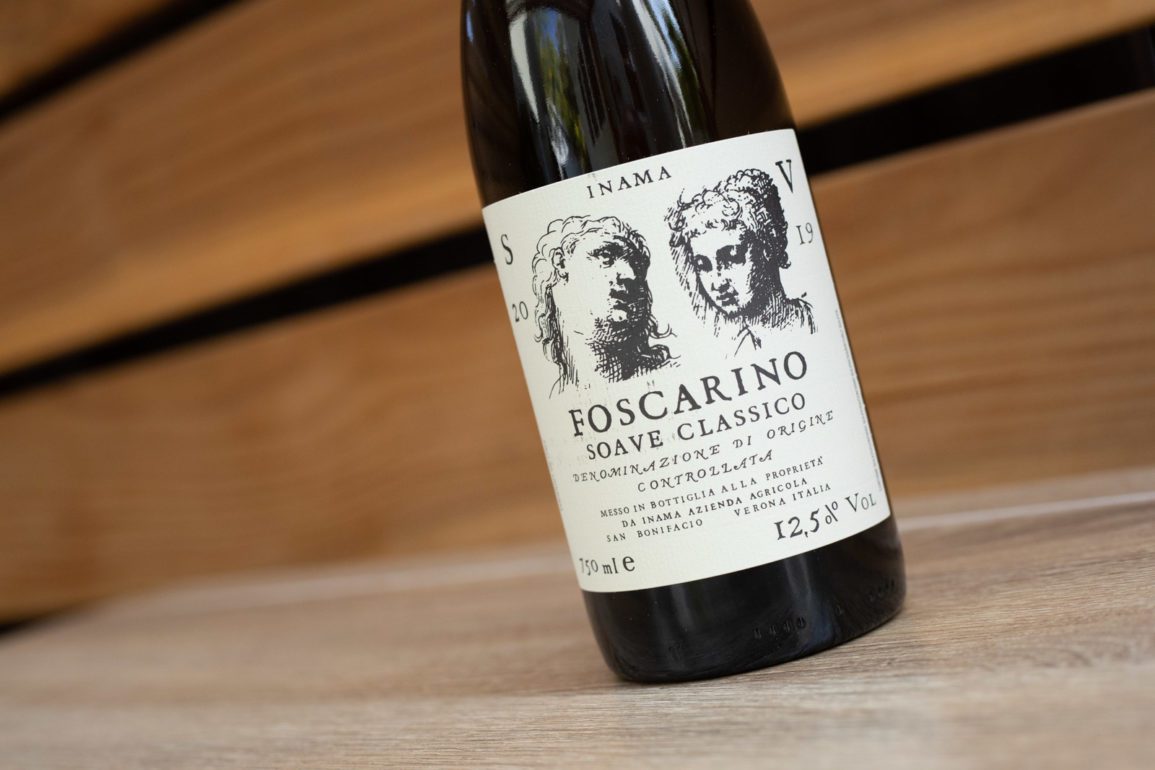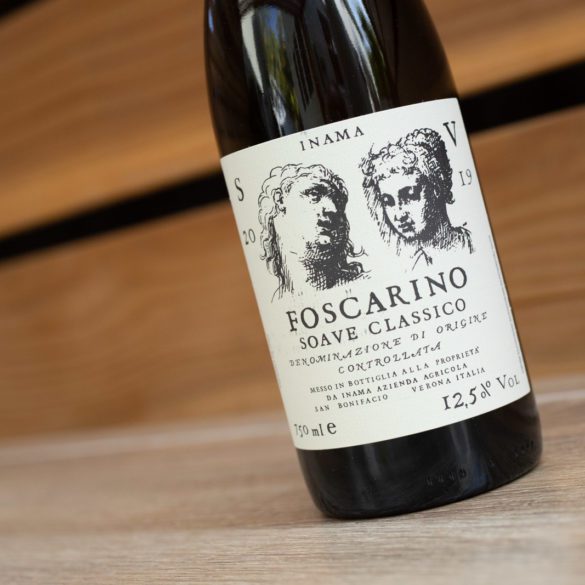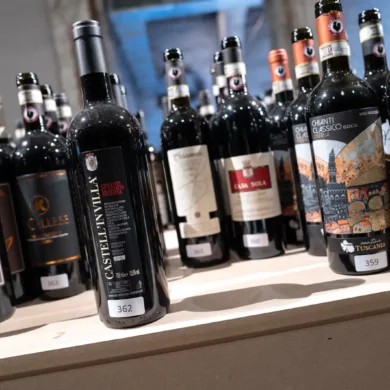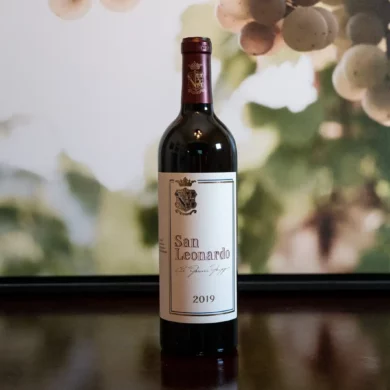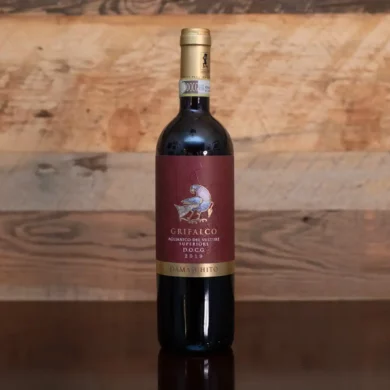The Soave Classico-based winery Inama has long held a certain appeal to me thanks to their labels. (Yes, let’s begin this review by talking about the proverbial “book cover”). Monochrome yet eye-catching on a shelf of bottles, they possess a certain modern-meets-classical sensibility that makes one want to pull the cork and read a Lonely Planet guidebook to Italy. Never mind what Soave means (or doesn’t mean) to you. Never mind that the wines are practicing organic and low(ish) in alcohol. Inama’s wines — particularly the Foscarino with its two angelic faces — look like a Venetian vacation. Who wouldn’t want to tour a Palladian palace on the back of a Vespa?
I’ve been tasting Inama’s Soave wines for several vintages, and they have always been a pleasant treat: fruity and mineral in the right places, if perhaps lacking a certain indelibility that the labels undoubtedly possess. However, in the last two vintages — particularly with their showpiece Soave Classico from Foscarino — I’ve noticed a change for the better. With the 2019 in particular, the wine inside more than eclipses the beautiful packaging.
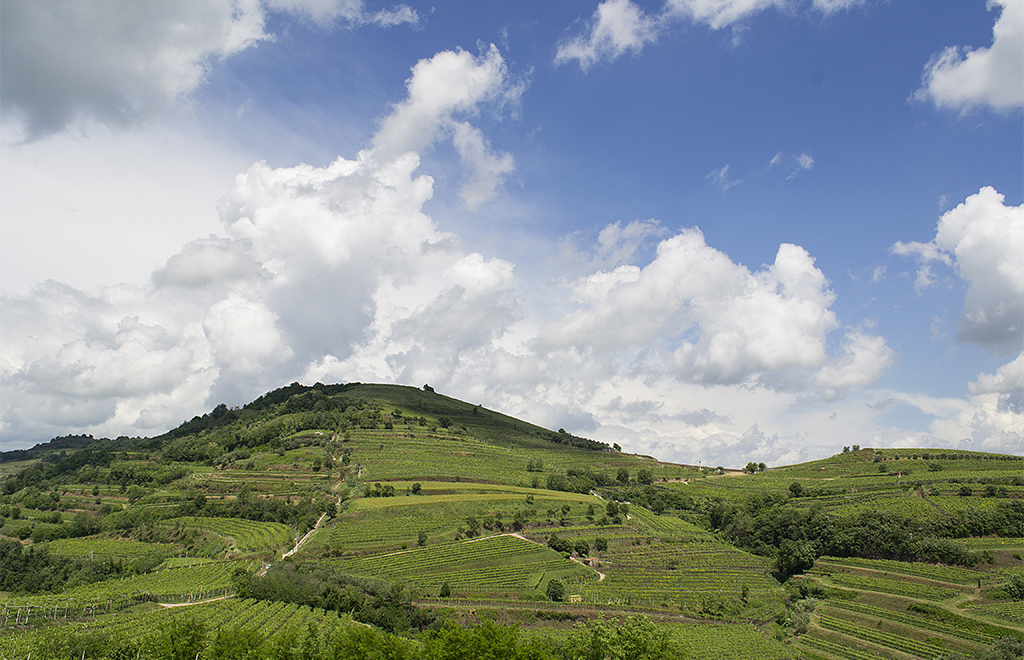
The Difference is the Finish
“This is the wine I’ve been waiting for from Inama for some time.”
The backbone of Soave is Garganega, an ancient and indigenous grape variety that must account for 70 percent of the final blend. To make the Foscarino Soave Classico, the Inama family opts for a varietal approach, going all-in on Garganega from the slopes of the eponymous hill. Foscarino soaks up the sun, with east-, south- and west-facing slopes. Compared to another “single cru” Soave Classico from Inama — Carbonare, which only faces east — the Foscarino acts like a blend of multiple plots because of these varying exposures.
The wine has long radiated back this sunlight in the form of bright fruit tones and intensity. But looking over my notes, the missing element was an impressive finish. (Think of a gymnast who twists and turns brilliantly off the vault, but takes a step to the side on the landing).
It is in the textural aspect of Inama’s Foscarino where things have greatly improved, possibly because of a few tweaks in the winery. They are now fermenting the wine in a mixture of oak barrels, large casks and stainless steel, finding that they like the results more and more as the percentage from large casks increase. With each sip, the wine now seems to segue towards another one, and another one — the momentum seemingly fueled by a glossy texture and a touch of almonds. And when it comes to finish on the palate, this gymnast is now “sticking” the landing each time.
This is the wine I’ve been waiting for from Inama for some time. While reading over past tasting notes, I recalled my previous feelings of oh-so-close. Well, the Foscarino is there now, and it is one of the more striking white wines coming from Veneto.
2019 Inama Foscarino Soave Classico
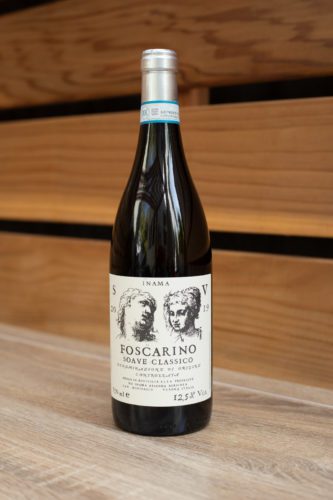
Soave Classico DOC (Veneto)
Grapes: Garganega (100%)
Alcohol: 12.5%
Opinion: ★★★★ 3/4 (out of five)
Food-friendliness: Impeccable
Value: As expected
Learn more about our wine icons.
A beginner might like … the freshness and fullness of this wine. If your only experience with the white wines of Veneto lies in Pinot Grigio, then you’ll certainly be surprised by this dichotomy. The Foscarino brings to mind citrus, light strawberry, white flowers and that aforementioned almond note — all packaged with a full-throttle acidity and medium body.
A wine obsessive might like … placing this Soave Classico on a taste spectrum between Albariño and Chablis. There was an intrinsic quality to its texture that reminded me of Albariño’s saltiness, while the nose registered bright and clean like Chablis. Obviously, we owe it to Inama and Garganega to claim its own space, but if you’re looking to match moods, that’s where it resides.
Note: This wine was provided as a sample by Inama’s importer, DallaTerra Winery Direct. Learn more about our editorial policy.

